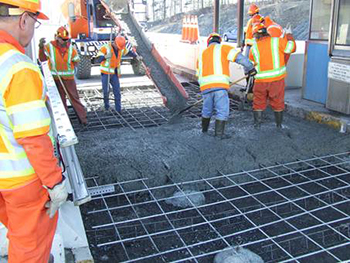About Thruway Maintenance
The New York State Thruway: Renowned for Safety and Reliability
Hundreds of millions of recreational and business travelers, daily commuters, and commercial vehicles travel billions of miles every year on the New York Thruway's 570-mile superhighway system.
Supported almost entirely by toll revenues - not tax dollars - the Thruway is widely known for safety and reliability, and 2013 and 2014 were the two safest years in our history.
The Thruway's reputation for safety and reliability is based in part on the expertise, hard work and dedication of the approximately 1,300 men and women of Thruway's department of Maintenance and Operations.
Maintenance and Operations is responsible for all of the Thruway's vast infrastructure, including:
- 2,840 lane-miles of highway
- 817 bridges
- 21 maintenance base locations
- 59 interchanges
- 27 service areas
- 11 parking areas
- More than 600 variable message signs, traffic cameras, weather information and traffic data monitors and other intelligent transportation elements
- 4,000 pieces of equipment including plows, loaders, bull dozers, pavers, water trucks and other specialized equipment.
We work hard every day to maintain our infrastructure
Thruway maintenance engineers work every day to ensure the safety of our patrons and the reliability of our extensive system. These engineers ensure that necessary maintenance work is completed, which may entail preventive and corrective measures, repair and rehabilitation or reconstruction.
Major rehabilitation and reconstruction projects are generally managed as part of our system-wide capital program. A detailed description of the capital program can be found under our capital program section.

Maintenance activities include:
- Repairing pavement and shoulders
- Repairing guiderails and other safety elements
- Sealing pavement
- Repairing bridge piers and abutments
- Painting bridges
- Keeping bridge bearings in good working order
- Clearing debris
- Controlling vegetation
- Clearing trees and brush and mowing grass
- Cleaning and reshaping drainage ditches
- Replacing roadway signs
- Inspecting and repairing culverts